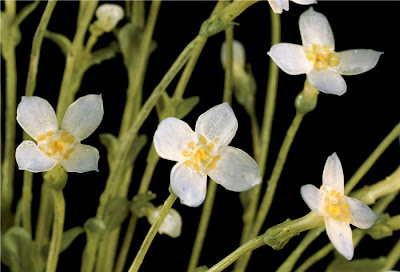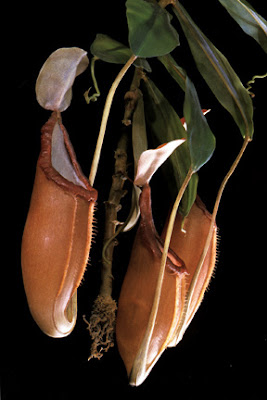I vividly remember the day when my friend Katya took me to a somewhat musty corner of Harvard's natural history museum to look at an astonishing array of plants in glass cases. Marvelling at their freshness I asked, "How are they preserved?" She answered, "They're glass."
And so they are, although even an hour or intense staring can hardly convince you of it. Only when one shatters is its nature revealed.
They were the creation of two of history's most accomplished artisans, Leopold and Rudolf Blatschka. Making models of museum specimens for study was routine in the nineteenth century, before color photography. But most museum models were made of paper maché or wax. Using his mastery of glass, Leopold Blatschka specialized in organisms hard to render in any other medium, especially marine invertebrates and flowers. Beginning in 1863, Leopold supplied the museums of the world with these wonders, and then his son joined him in the craft. By the time Rudolf retired in 1936, they had bequeathed to the world a legacy few artists can match.
Today there are two major collections of their creations, the marine invertebrates at Cornell, which has just posted an excellent online gallery of their specimens, and the Ware Collection of Glass Plants at Harvard.
Typical of Harvard that they have not bothered to post any images; so I step into the breach with this collection of gleanings from the web.
The Blatschka flowers are not perfect; they are exact copies of living specimens, with all the blemishes of the original.
They seem to live and breathe. But they are glass, and they sit unchanging and undecaying before us, pulled out of time by the Blatschkas' mastery.
Subscribe to:
Post Comments (Atom)









No comments:
Post a Comment